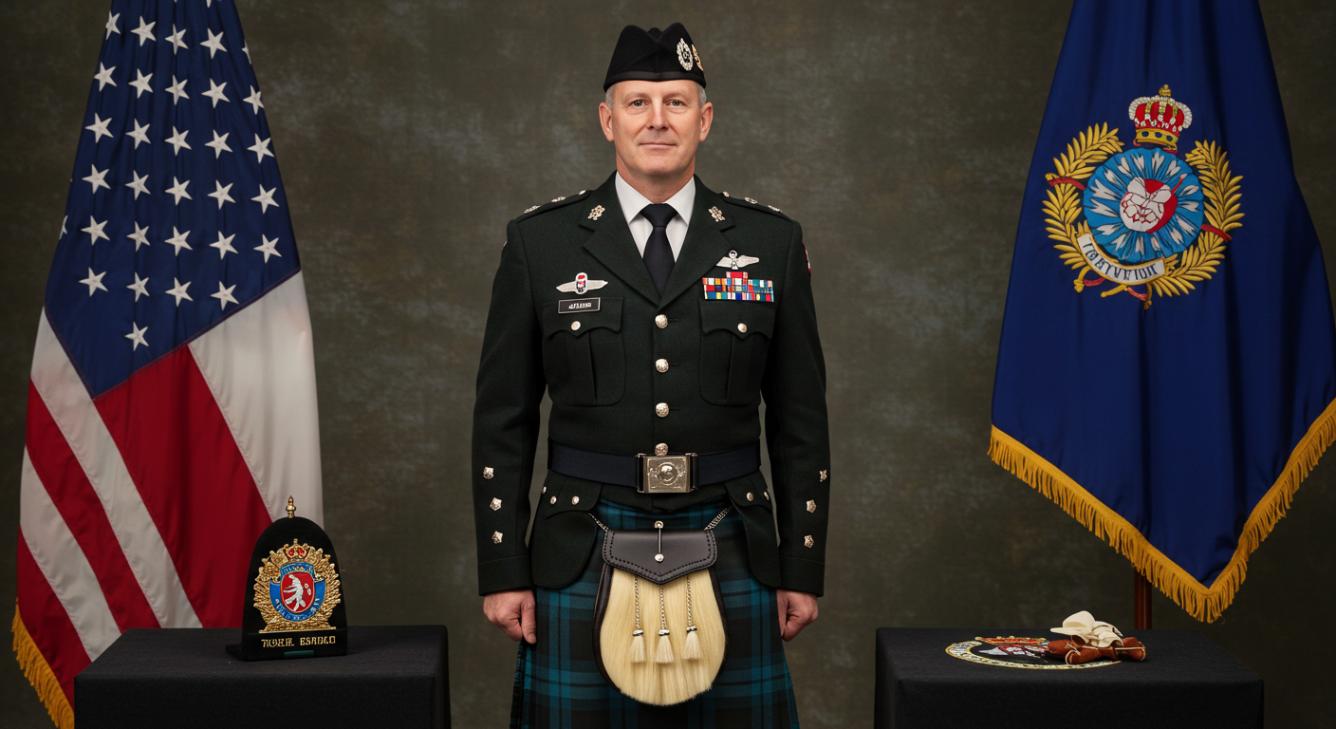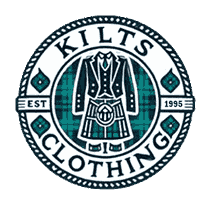How a Kilt Male is Used in Military and Law Enforcement: A Look at Uniform Traditions

The kilt, often associated with Scotland's rich history and culture, has maintained its place in military and law enforcement uniforms. While kilts may not be the everyday uniform for military personnel or law enforcement officers, their continued use in certain ceremonies, regimental traditions, and even some specialized units highlights the garment's importance in representing history and national pride. In this blog, we explore the role of the kilt male in military and law enforcement settings, how it functions within these uniforms, and the deeper significance behind its continued use.
The Kilt's Historical Role in the Military
Kilts for men have long been a symbol of Scottish heritage and pride, and their presence in military uniforms dates back to the 16th century. The earliest records of Scottish soldiers in kilts trace back to the Highland regiments, where the kilt represented more than just a garment—it symbolized status, identity, and tradition.
The early Highland regiments, composed primarily of Scottish soldiers, adopted the kilt as part of their uniforms to honor their cultural heritage. These kilts were made from woolen cloth, often tartan in design, and worn with a sporran (a small pouch), a belt, and socks that covered the knee. The distinctive nature of the kilt served as a statement of regional identity, with specific tartans associated with particular clans or regions.
As Scotland's military contributions grew, so did the kilt's role. By the 18th century, kilts had become central to military uniforms in Scottish regiments, including the famous Black Watch Regiment and the Royal Scots. These regiments fought in many major conflicts, and the kilt symbolized Scottish pride, bravery, and unity within the ranks.
Kilts in Modern Military Uniforms
While kilts may not be as commonly seen on the battlefield today, they remain an important aspect of ceremonial and formal military attire. In modern military units, particularly in Scotland, kilts are worn during parades, official ceremonies, and special occasions, where soldiers honor their traditions and national identity.
One of the most notable examples of kilt use in modern military uniforms is the Royal Regiment of Scotland. This regiment, established in 2006, is one of the largest and most well-known regiments in the British Army, and its soldiers continue to wear kilts as part of their official uniforms for ceremonial events. Simple kilt and also male leather kilt is worn with pride by soldiers as they march in parades, representing the history of Scotland and the contributions of Scottish soldiers throughout the ages.
In addition to the Royal Regiment of Scotland, kilts are still worn by other regiments that have roots in Scotland's military past, such as the Black Watch, which was originally founded in 1725. Kilts are also part of the ceremonial attire worn by certain Scottish officers and bands during special occasions like royal events and military tattoos.
The reason kilts remain relevant in modern military uniforms is twofold: first, they are deeply symbolic of Scottish military history and identity; second, they are practical for ceremonial purposes, allowing soldiers to move freely while maintaining a sharp and dignified appearance.
Kilts in Law Enforcement
While kilts are more commonly associated with military uniforms, they have also made their way into law enforcement uniforms in certain regions, particularly in Scotland and other areas with strong historical ties to the kilt. Kilts are not typically worn by law enforcement officers on regular patrol but are incorporated into uniforms for ceremonial occasions or specific roles that honor tradition.
In Scotland, for example, police officers are sometimes seen wearing kilts for formal ceremonies, commemorations, and celebrations. The kilts police officers wear often reflect the same styles as those worn in military uniforms, including tartan patterns that symbolize national and regional pride.
While this may be less common elsewhere in the world, there are instances where kilts are worn as part of law enforcement uniforms during ceremonial duties. The inclusion of kilts in law enforcement uniforms upholds a sense of tradition and pride in the country's cultural heritage, offering a nod to the past while acknowledging the evolving role of law enforcement in modern society.
Practicality and Functionality of Kilts in Military and Law Enforcement
One of the most compelling reasons that kilts continue to be worn by military personnel and law enforcement officers during special occasions is the combination of tradition and practicality. While kilts may not be suitable for everyday duty or combat demands, they offer distinct advantages during ceremonial events.
The kilt allows for a range of movement that is often more comfortable than rigid clothing, such as trousers. This freedom of movement makes it ideal for formal parades or marches, where precision and grace are required. Additionally, the design of the male kilts for sale provides comfort in different weather conditions, as it allows air circulation, which is beneficial in warmer climates.
That said, modern iterations of the kilt are specifically designed to meet the functional needs of soldiers and officers. For example, modern military and law enforcement kilts are often made from durable, weather-resistant fabrics. They are reinforced with stitching to withstand wear and tear.
However, the practicality of wearing a kilt in daily duties is limited, as they are less functional for more physically demanding roles. The kilt is reserved for ceremonial use rather than standard operational uniforms.
Kilt Male as a Symbol of Identity and Tradition
In all its forms, the kilt remains a symbol of identity, unity, and tradition. For both military personnel and law enforcement officers, wearing the kilt is a way to honor national heritage and demonstrate pride in their role as guardians of the people. Kilts help convey the rich history of Scotland's military and law enforcement services while also serving as a uniform that emphasizes the unique identity of the wearers.
When soldiers and officers don the kilt, they pay homage to the traditions of the past and affirm their place in a long-standing history of service and dedication. Whether worn in battle or during ceremonial events, the kilt serves as a reminder of the commitment to duty and the honor of serving one's country.
The Future of Kilts in Military and Law Enforcement Uniforms
As military and law enforcement uniforms evolve, kilts will likely remain a part of ceremonial attire for certain regiments and police forces. Their historical and cultural significance ensures that they are not easily replaced, and as interest in traditional attire grows, the kilt may continue to be worn with pride by future generations.
While the kilt may not become a mainstream part of everyday military or law enforcement uniforms, it will undoubtedly retain its place as an iconic symbol of history, heritage, and identity.
Conclusion
The kilt male has a rich history in both military and law enforcement uniforms. Its continued use is a testament to its cultural significance, practicality, and symbolic importance. Whether worn as part of military regiments or in law enforcement ceremonies, the kilt remains a garment representing tradition, identity, and pride, continuing to link past and present.
By exploring its role in military and law enforcement uniforms, we understand how this iconic garment connects with the broader cultural heritage and serves as a lasting symbol of unity, honor, and tradition.


